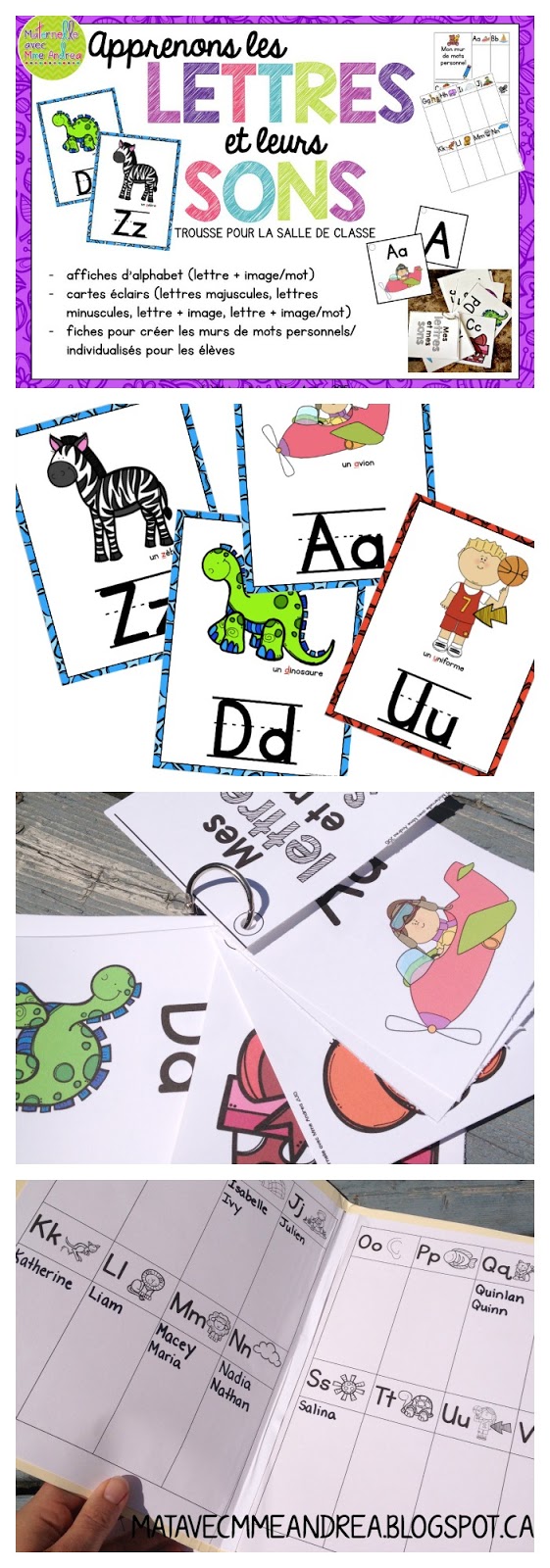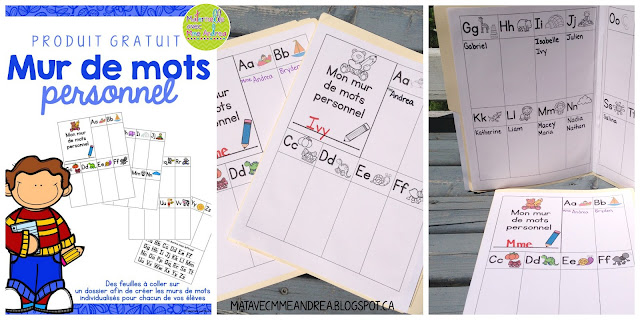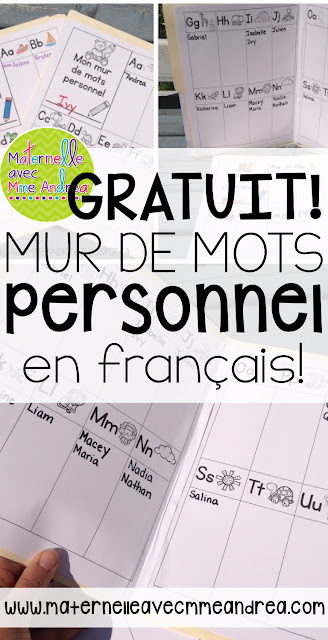I am on a product roll! I have been super motivated ever since the #TpTSellerChallenge and crossing things off my massive to-do list. I have been thinking a lot about the (academic) things that my students REALLY need to know to be set up for success in grade one, because, after teaching a primary/1 combined class this past year, I realized what a massive jump it is from grade primary to grade one. I have definitely been guilty of sending my babies along without having them appropriately prepared! I am determined this year to do my best to give them enough opportunity to practice the skills they need to be successful readers, writers, responders, communicators, and mathematicians. Small task, eh? ;) How am I going to do this? In two ways – practice and GAMES! I am going to be creating a whole bunch of games in the coming weeks to work on letter/sound recognition and identification, high-frequency words, and math skills. I truly believe that children learn best through play, and it’s my goal to give them opportunities to play at least one literacy, one math, and one oral communication game each day.
Two other things I have thought a lot about are consistency and homework. I did the whole “message du jour” daily homework for the past 3 years, stubbornly claiming that my students needed to practice one-to-one correspondance, high frequency words, and the whole homework “routine” in this way. And guess what? I was SO BORED of writing the messages du jour that I can’t even imagine how bored my students must have been reading them each night (*disclaimer – I am in no way trying to imply that message du jour is bad or unimportant – I am just saying that it wasn’t working for me and my class!*). I have been thinking hard about what the whole point of homework is, and what I can send home with my students each day that will really help them succeed with what we are working on at school. Here are my thoughts about homework:
- It IS necessary, even in primary. Think about it – any other lesson/activity that children do extra-curricularly requires practice. Want to learn how to play piano? You practice on the days you don’t have a lesson. Want to play in a hockey game? You have to go to practice. Want to get really really good and be drafted first overall into the NHL and win a Stanley Cup and Olympic gold before you turn 25? You practice as much as you can, in your basement with spare pucks and the dryer! Want to become a fluent reader? You must practice!
- It should NOT be used to teach new things. It should provide students with an opportunity to practice what they ALREADY KNOW, as a way to get really, really good at it. This was a big issue with my message du jour – half the words my students couldn’t even read for the first half of the year. Can you say frustrating?? For them and for their parents!
- It should be quick and efficient. Children need time to play and move their bodies. They spend lots of time working hard all day long at school. They are tired! I want my kinders doing no more than 15 mins MAX of homework a night.
- It should be consistent, but not boring. The routine should stay similar all year long, but the content can change as the student learns more and more.
With these thoughts in mind, I next considered what all my students should know academically, no matter what, by the end of June. It’s my goal to get them all there! I want them to learn:
- the letter names and sounds of all the letters of the alphabet
- a handful of the most common French “sons composés” (on, ou, oi, etc.)
- at least 50 high-frequency words
- how to count to 20 inside out, upside down, and backwards! :)
- that they can use a combination of letters, words, and pictures to share their ideas with others
- that when you read, a word said = a word read (a word that you can see on the page)
- being at a francophone school, I of course want them to be able to speak clearly, correctly, and fluently, but that is a big can of worms to get into and another post for another day :)
I have a lot of other outcomes to cover too, of course, but it is going to be my personal goal to ensure that every student is able to do the above by the end of June.
I already have a product in my store for high-frequency words and one for sons composés that I used this past year and LOVED. My students had great successes using them last year! have created a new product to help my students with the alphabet – learning upper- and lowercase letter names and sounds, as well as associating an object or image’s beginning sound with each letter.
The product contains three things. There are full-page alphabet posters that include the letter and an image, as well as flashcards for practicing lowercase letters, uppercase letters, and associating letter names with their sound.
I have also included a new Freebie from my store – a product called Mur de mots personnel, used for creating personal, individualized word walls for each student.
The alphabet posters are brightly coloured and include an option of a red background for vowels. I have included two different pictures for c and g, to show the hard and soft sounds.
I am really excited about the flashcards! I am going to send them home in my students’ reading bags to practice, and that’s it – no other homework. I really want my students to practice letter names and sounds as often as possible.
Teacher confession: I have never had every single child know all their letters and sounds by the end of the year. I know it is possible because I see other teachers do it (sometimes by Christmas, even!), so I know that I just haven’t given them enough opportunity to practice. Each child will have 3 alphabet rings (uppercase, lowercase, and letter + image) and a sight word ring in their reading bag to start the year.
I teach 3-4 letters a week as a class, and we will add the letters we are focusing on that week to our rings once we have been exposed to each one. That way, my students will be reviewing letters they have already seen and practiced, rather than trying to learn letters at home they may not have ever seen before.
I will send a script home to parents that I would like their child to use as they practice: “A fait /a/ comme dans avion“. Eventually, students will have every letter of the alphabet to practice! I will assess them weekly using ESGI software to see which letters they need more practice with during small group time.
The final part of my product, personal word walls, is actually available in my FREE French Resource Library, but I included it in the download as well because it uses the exact same images as the alphabet and flashcards.
Consistency is so key!!!
I had another set of alphabet posters I was using with my class, but I didn’t like some of the chosen words, and I was unable to find the same images for personal alphabets, word walls, and flashcards.
I didn’t like how I would send home flashcards with my struggling students with different images than we talked about and practiced in class. Hence, this product was born :)
There is a colour version and a black & white version, so use what you prefer.
All you have to do is print a copy of the four pages for each student, and glue each page on the same file folder (one on the front, two inside, and one on the back).
I strongly suggest laminating them for durability and to avoid peeling edges.
Then, when your students come across a word that they write frequently but that isn’t on the class word wall (ex. a sibling’s name or a word that is tricky to sound out phonetically), use a Sharpie to write their word under the appropriate letter.
Pro tip: if you mess up, you can remove Sharpie from laminated products using hair spray!
Even though I love to get my students to do as much as possible on their own, I do write the words for them in this case – the goals is that they are able to read the word in order to rewrite it :)
I introduce personal word walls once everyone can read all (or *almost* all) of their classmates’ names, and so I pre-write my students’ names on the inside.
But that’s it!! I don’t write in words from our class word wall words unless a student specifically asks for one.
It is very important that personal word walls only contain words that the student can identify and find on their own, and/or words they have trouble locating on the whole class word wall – autonomy is the goal!
Well, that’s it! Longest blog post ever :) If you are still here – thanks for reading and go reward yourself with that free word wall download – it’s in the “Écriture” section of the library.
Don’t have access yet? No problem! Just CLICK HERE, enter your info, hit the pink button, and I will email you the password!













Thanks Mme. Andrea. It's such a good idea!